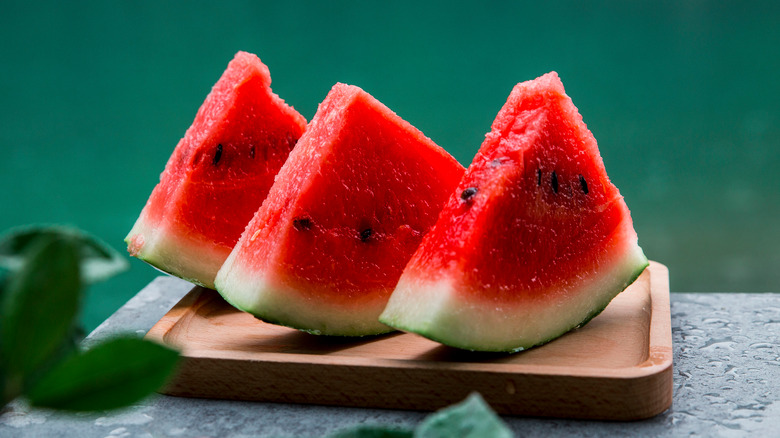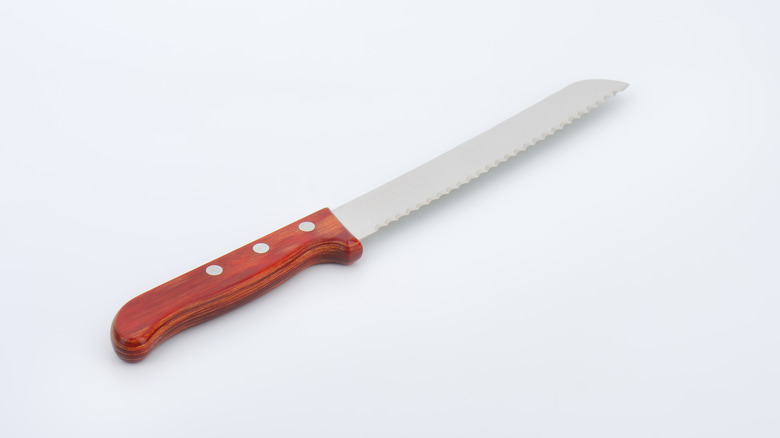The Best Type Of Knife To Make Cutting A Watermelon A Bit Easier
When you're looking for a sweet treat on a hot day, there's a good chance you're reaching for a slice of fresh, juicy watermelon. According to the Agricultural Marketing Resource Center, U.S. consumers put away an average of 15.5 pounds of watermelon per person in 2019, a number that has been steadily increasing over multiple decades. Folks can't get enough of the fruit. In fact, U.S. farms cranked out 38 million pounds of watermelon in 2020 — which is good news for both your tastebuds and your body. For starters, they're incredibly hydrating. Per Healthline, about 92% of watermelon is just water. (That's only 8% melon.) Plus, just 1 cup of watermelon contains 5% of the daily value (DV) for vitamin A, 4% DV for both potassium and magnesium, and 14% DV for vitamin C.
Whether you're having a picnic in the park or staying home for a backyard barbecue, the fruit is a famous fit for all occasions. (Watermelon has even been reimagined by one New York restaurant as a plant-based alternative to — believe it or not — ham). But, for as versatile and tasty as it is, there's one infamous moment every watermelon-lover knows and dreads: the cutting. Slicing up a whole watermelon is more comparable to wrestling a pig than it is to lightly chopping fruit on a cutting board.
Luckily, there's a tool for the job: Here's the best type of knife to make cutting watermelon a bit easier.
Serrated knife to the rescue
When it comes to cutting a watermelon, a serrated knife is the best tool for the job. Chef Scott Swartz of The Culinary Institute of America says that with a serrated edge you can "use the knife like a saw" and carve through the tough rind, halving the watermelon and then quartering it (via Huffpost). Swartz suggests cutting your watermelon lengthwise, which will make it easier to slice into triangular wedges for eating later on.
America's Test Kitchen recommends using a 10-inch wide model. "Its long blade and pointy teeth are perfect for getting a grip on that thick, slippery rind and that bite helps to hold the watermelon steady so that it doesn't slip around while you're cutting," the outlet explains. It's big enough to get a tricky, powerful job done right, but with more control and pliability than a chef's knife — which is both easier and safer.

